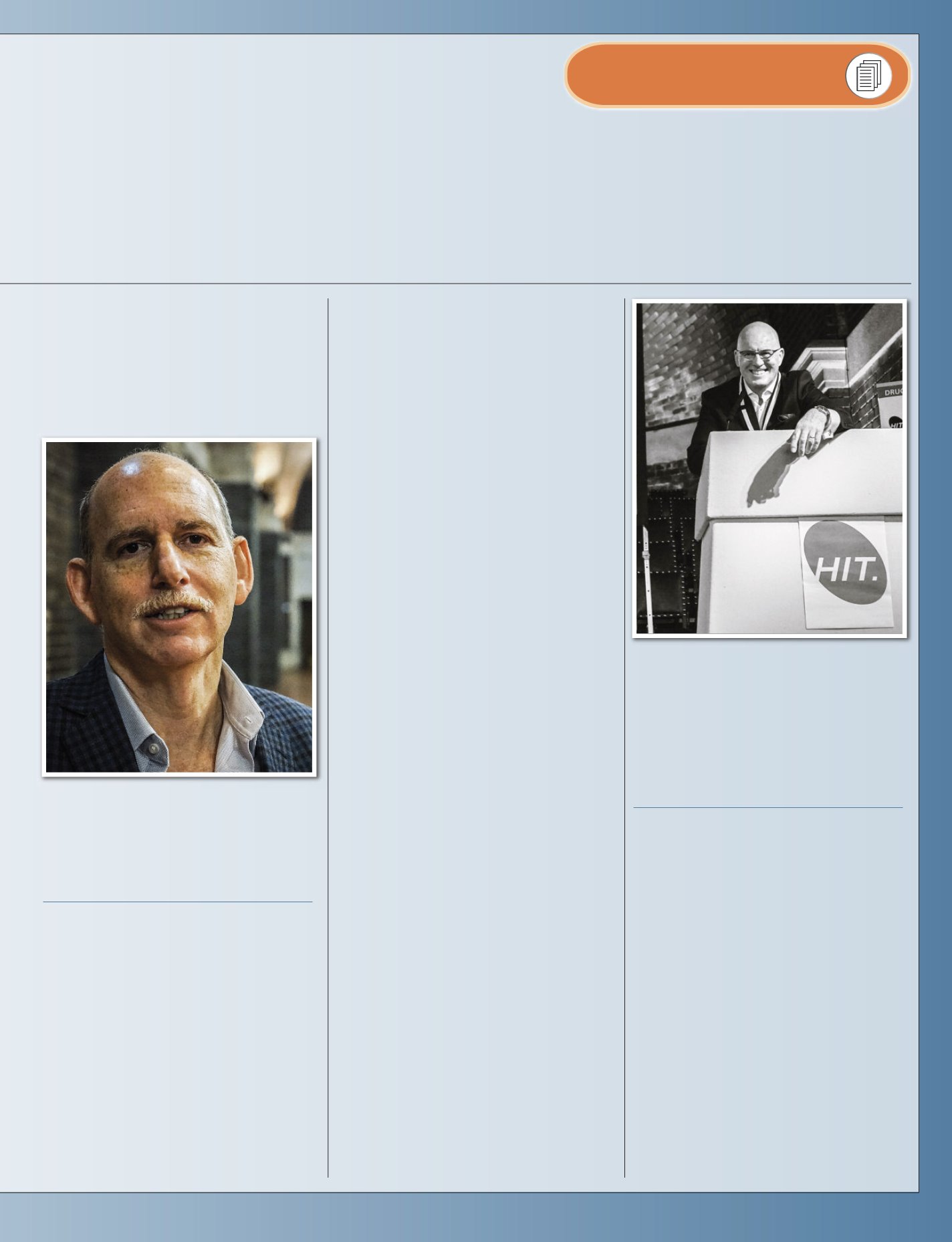
February 2016 |
drinkanddrugsnews
| 7
Join the debate by visiting
There were risks, he acknowledged, but it was
important to keep them in proportion, ‘or people will
run away from us.’ Harm reduction was the answer,
coupled with evidence-based policy-making.
To have any hope of changing the narrative, we
needed to spread clear and effective messages,
according to Jamie Bridge and Nigel Brunsdon, who
gave insight into using photo-based campaigns.
‘Back in the old days, campaigning was left to the
TV,’ said Brunsdon, showing images of some of the
most effective public health campaigns, such as
‘Charlie says’ (child safety), ‘Don’t die of ignorance’
(Aids) and ‘Coughs and sneezes spread diseases’.
Back then there was no immediacy, with months
of lead-up time for publishing in magazines. Modern
devices, however, brought the opportunity of
hashtags and hundreds of immediate hits.
Recalling the ‘Support. Don’t punish’ Facebook
page, he said: ‘I can join in an international campaign
just like that. All the barriers are taken away from me.’
The
#SupportDon’tPunish
campaign had
borrowed from successful campaigns such as
#NoH8
(against anti-gay marriage legislation),
#NotinMyName
(young Muslims showing solidarity
against terror attacks) and the
#BeTheGeneration
Global Fund campaign, to create a global day of
action around the world, added Bridge.
‘We constantly struggle with the stigma of our
cause,’ he said. But if you had a sellable idea you
could keep finding reasons to bring it back into public
consciousness. ‘Keep pushing,’ he urged, ‘you need to
bring it to people.’
Brunsdon gave tips and tricks to help change the
narrative through viral campaigns.
‘You can’t force a campaign to go viral, but you
can nudge it along,’ he said. ‘Give people the tools
and tell them what you want them to write. The
more barriers you remove to action, the more likely it
is to happen… Have simple messages, be original,
have goals and targets. Have good simple hashtags.’
Brunsdon illustrated this with a preview of his
new website, harmreductionisbeautiful, due to go
live in a few weeks. The site aimed to overturn the
way drug use and harm reduction were perceived.
‘It’s about changing the narrative – it’s always
depressing images of injecting in alleyways, and
never celebratory. The idea is simple – you put up
messages and have a selfie with it. Any of you can
contribute to this and can download any of the
images to use.’
Ethan Nadelmann of the Drug Policy Alliance
brought a perspective from the US that zoomed in on
Liverpool, the conference venue, as ‘the birthplace of
harm reduction’.
‘Americans have no interest in what’s happening
outside our country,’ he said. ‘We continue to fall
tragically short in areas where you have led the way…
areas like physician independence in prescribing.’
But, he continued, ‘when I hear how bad it is here
right now, with the decimation of resources, the
demonisation of people who use drugs, the sense of
fear of people trying to do the right thing, the
indifference to human life that this government is
demonstrating, I know that place very well.’
We needed to keep pushing forward while playing
good defence as well, he said, and this involved
‘addressing the fears of those who oppose us.’
The US was still involved in ‘the horrific drug war’
of the late 1990s, which had perpetuated
incarceration. We had to think ‘how do we shift
public views?,’ he explained.
Nadelmann used the example of cannabis –
medical marijuana – to show how the nature of
debate could be shifted, and how ‘we could play ball
in the big league of US politics’.
‘We changed the image of a marijuana user, from
a kid to an older woman recovering from breast
cancer, or someone recovering from Aids,’ he said.
‘When the pictures were shown, they touched the
hearts of the hardest Republican. We focused on
what we had in common.’
Equally important was finding ‘what drives our
opposition’ – ‘Fear is the driving element of the war
on drugs, fear of not knowing how to deal with
diversity,’ he said. This involved using their language
(‘pivotally important’) and exploring common ground:
‘We’re doing recovery and it works. “Grant us the
serenity…” That is the prayer of the drug policy
movement as well.’
It was about taking ‘unlikely voices and allies’
and embracing common values, Nadelmann told
the audience.
‘Being as open and responsive as possible will lead
you out of this dark period and restore you as the
leader of the world in dealing with drugs.’
Concluding a thought-provoking day enhanced by
plenty of audience interaction, Pat O’Hare concluded:
‘Drug policy reform is the best harm reduction. Keep
the faith, keep the passion.’
DDN
‘Fear is the driving
element of the war
on drugs...’
ETHAN NADELMANN
‘Drug policy reform is
the best harm reduc-
tion. Keep the faith,
keep the passion...’
PAT O’HARE
THE RECORD


